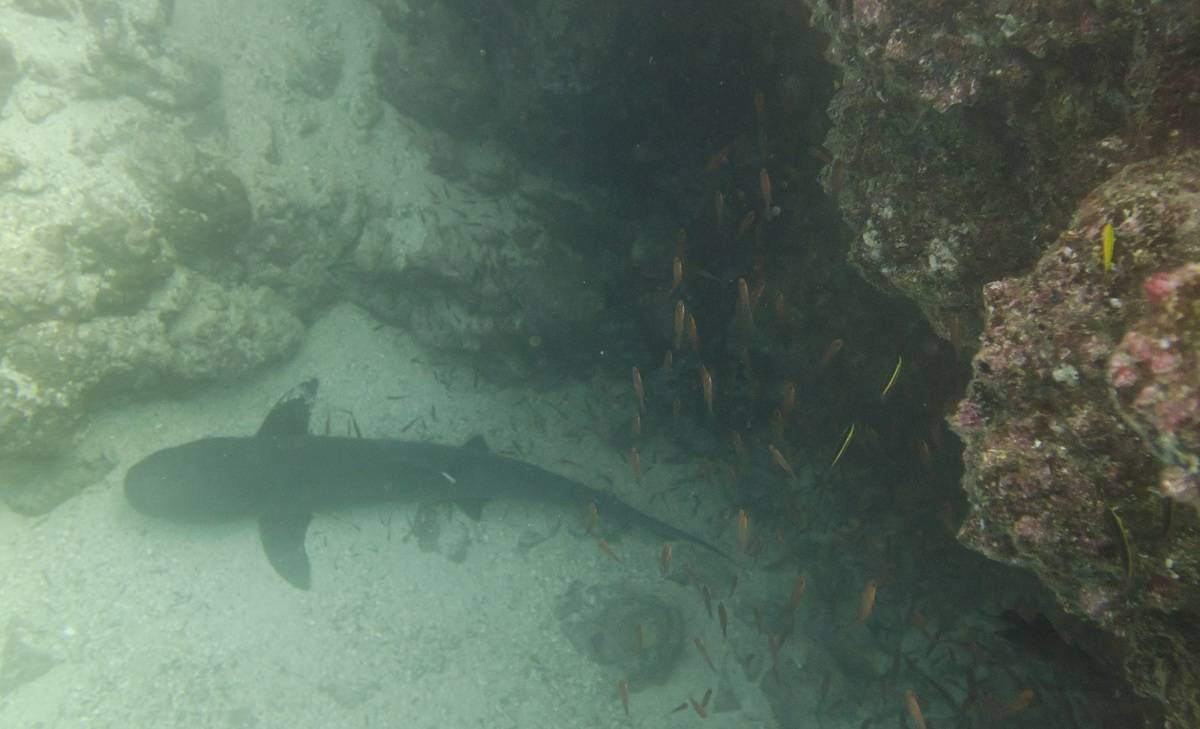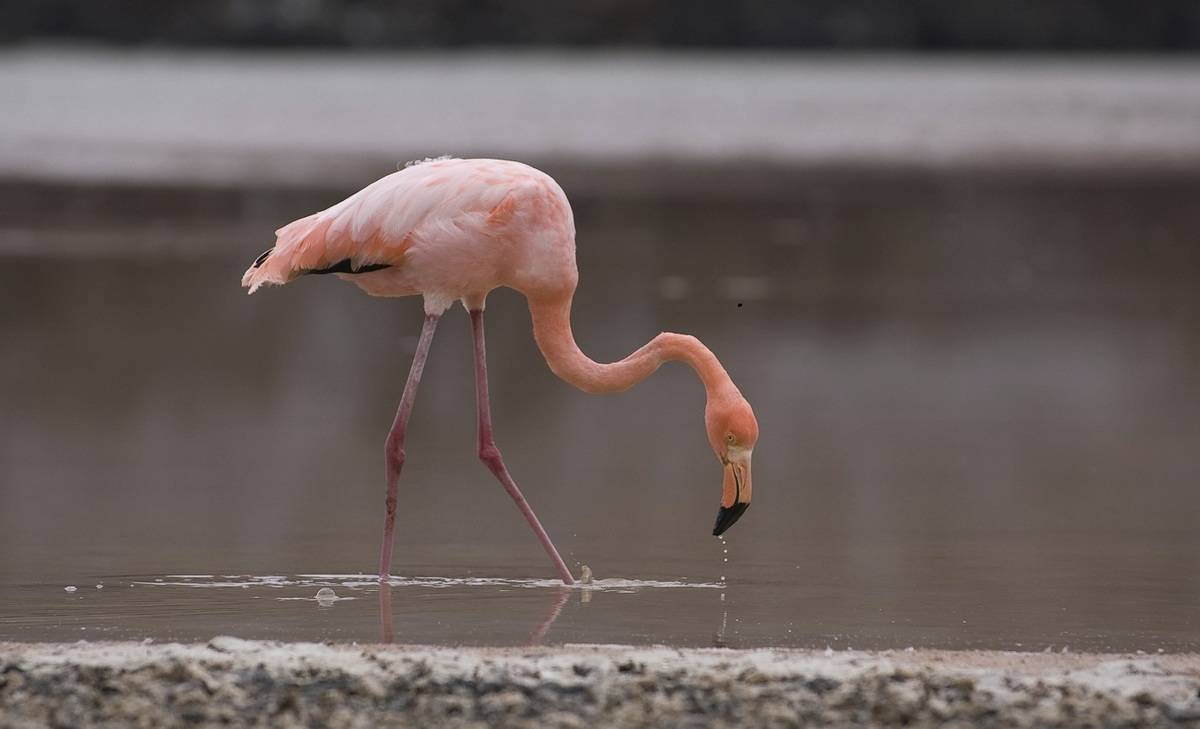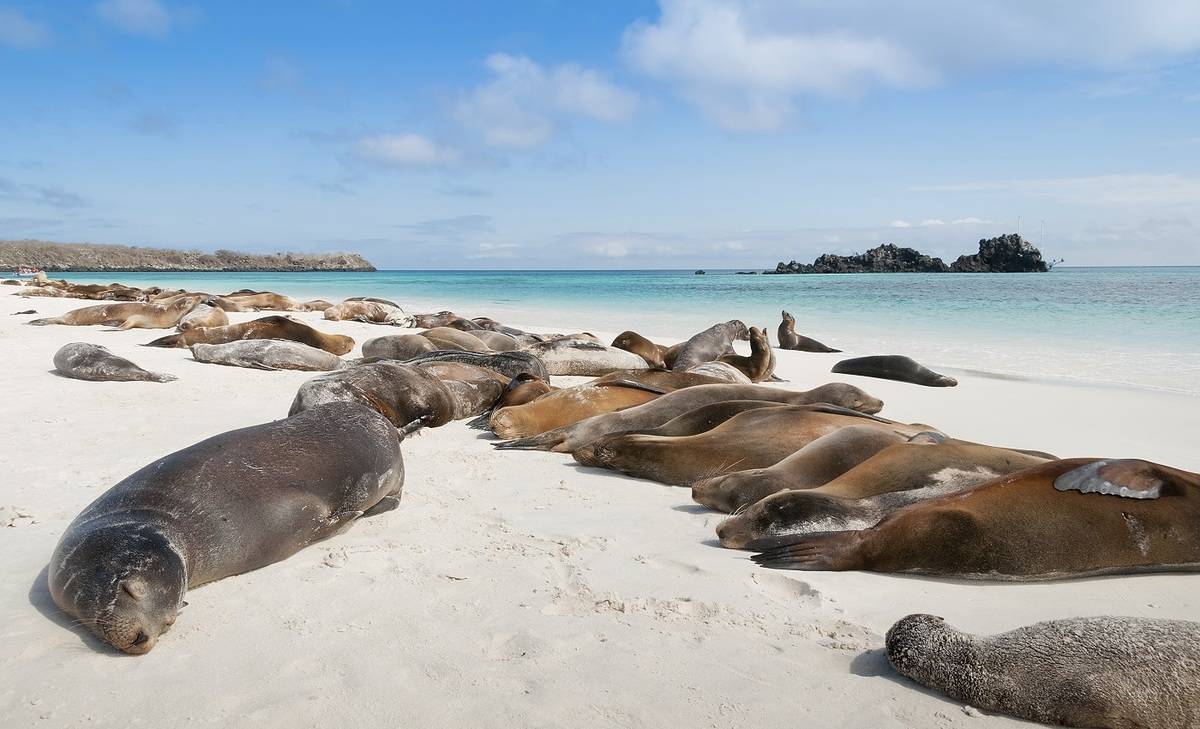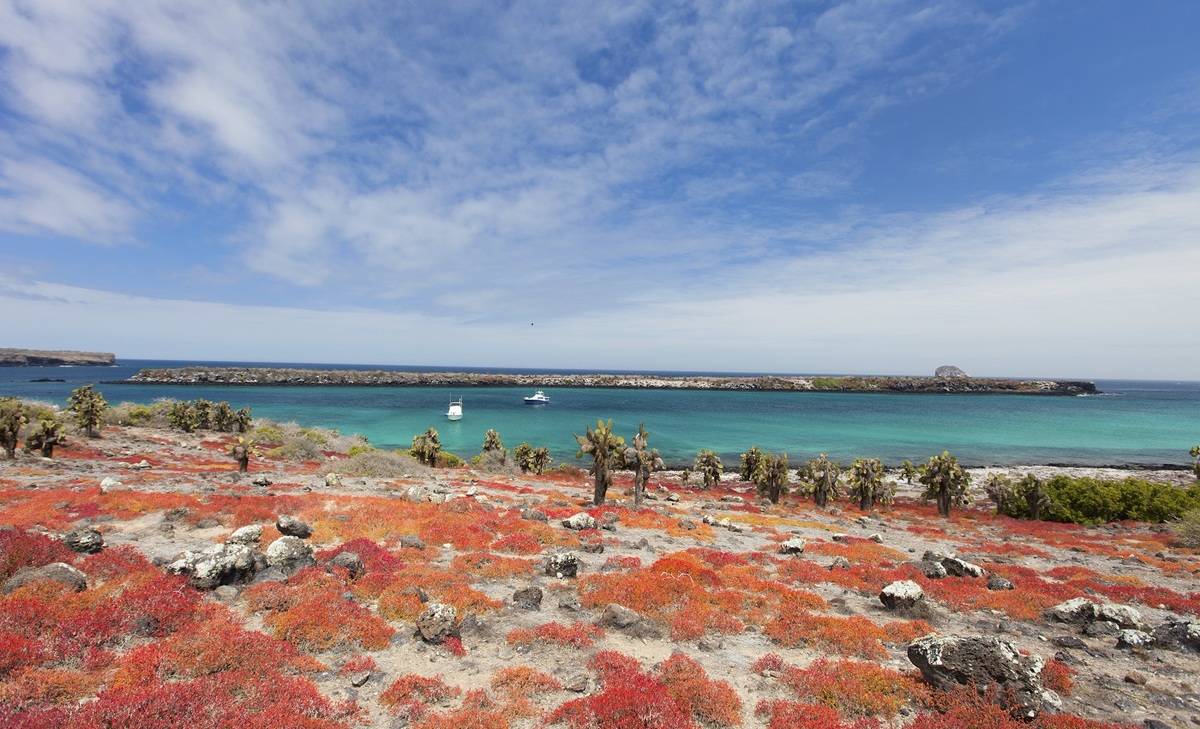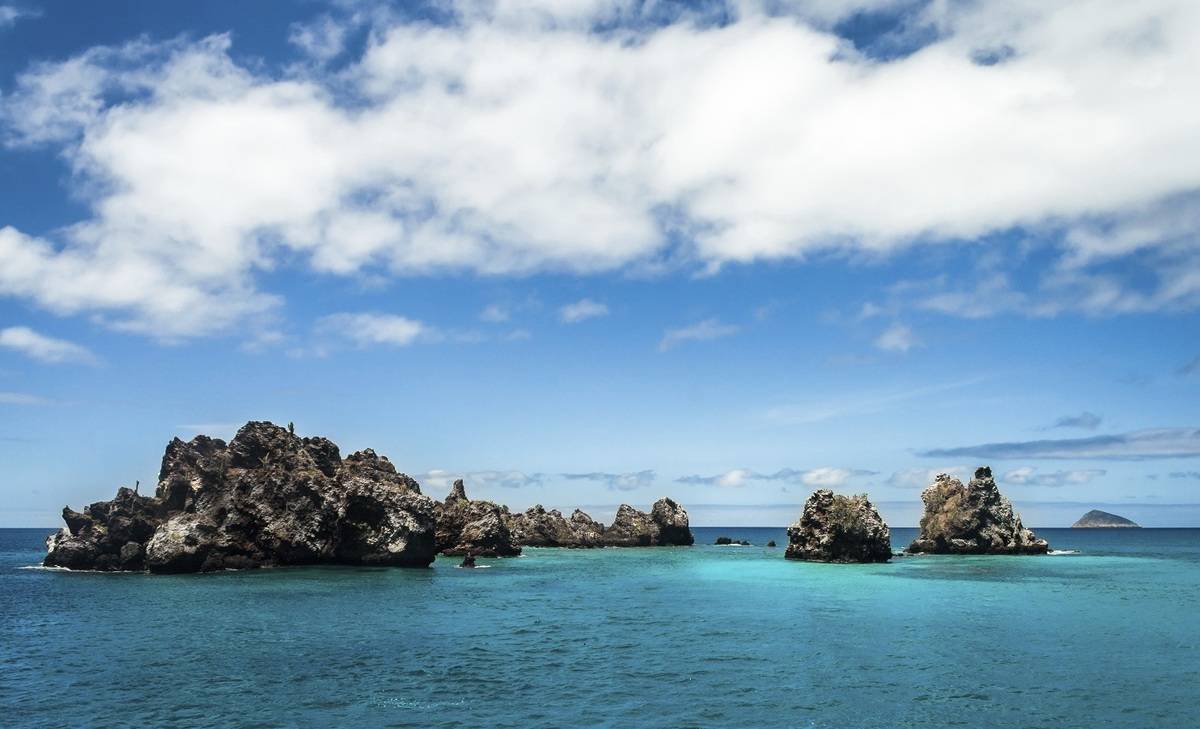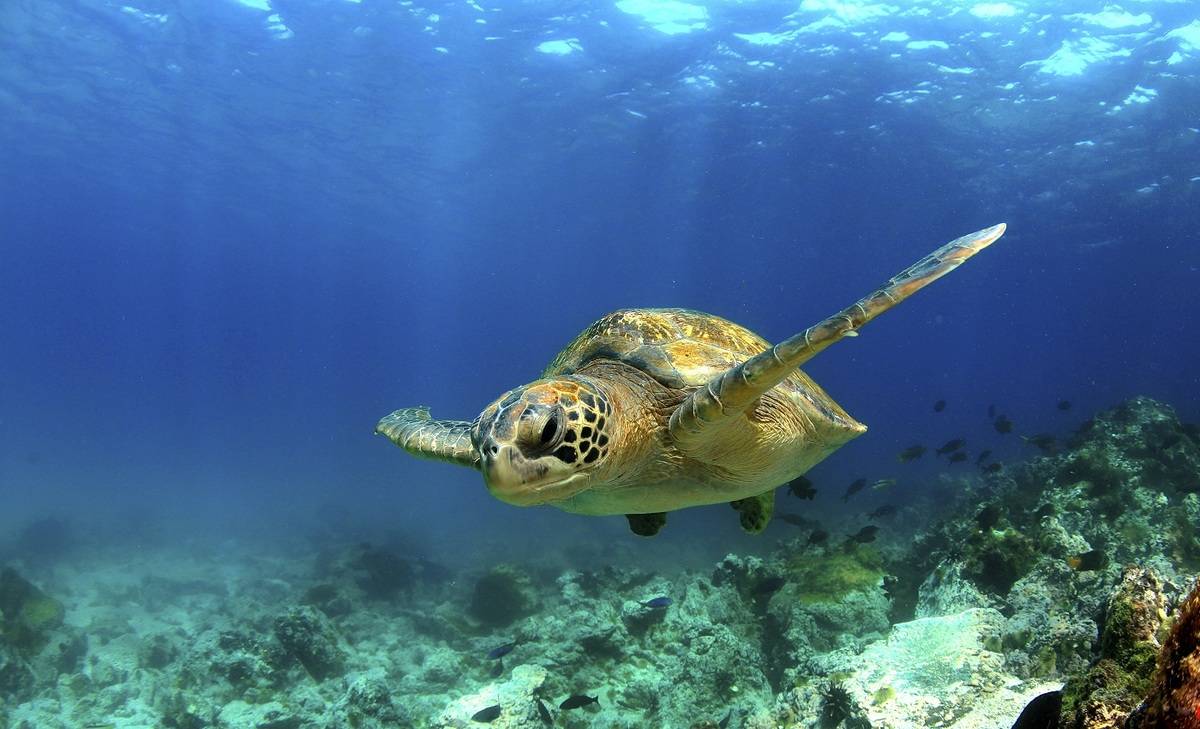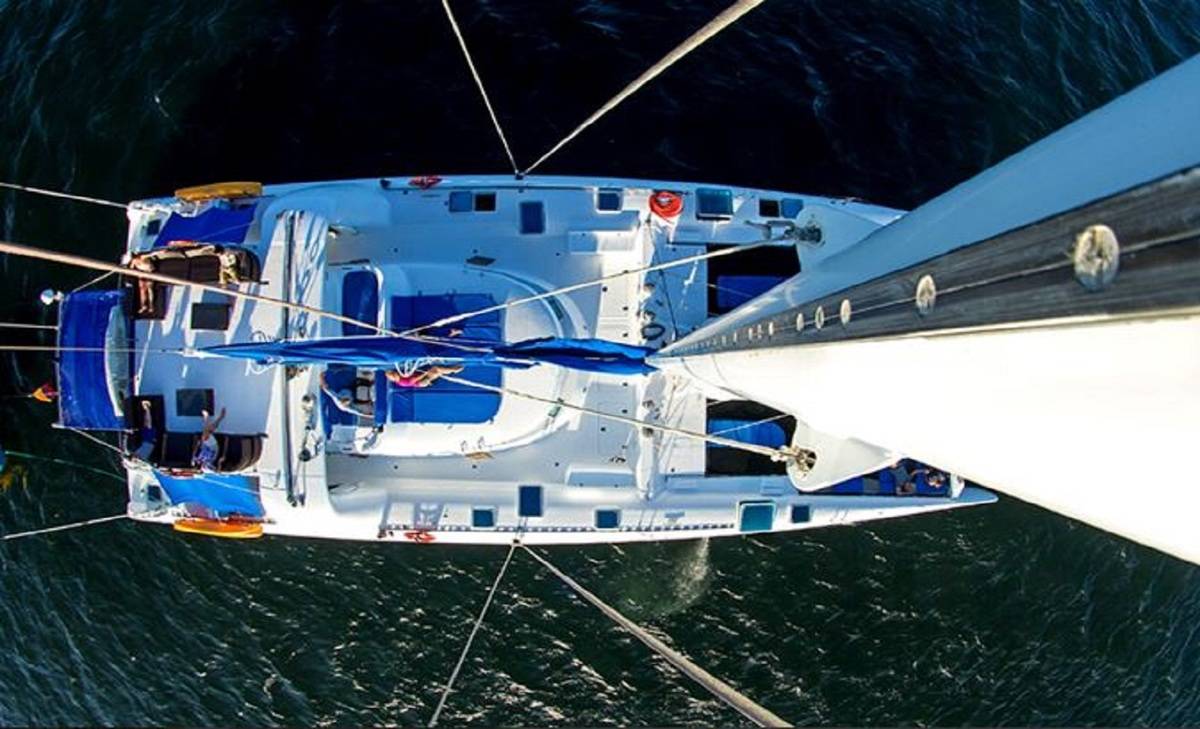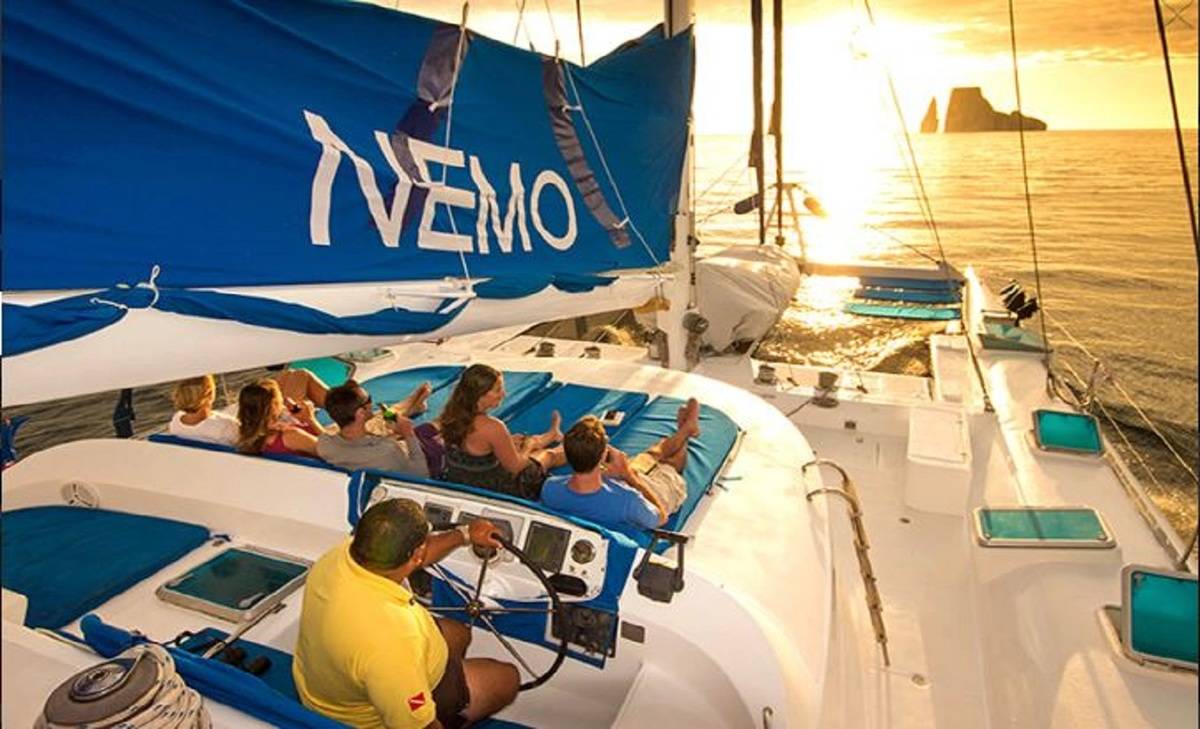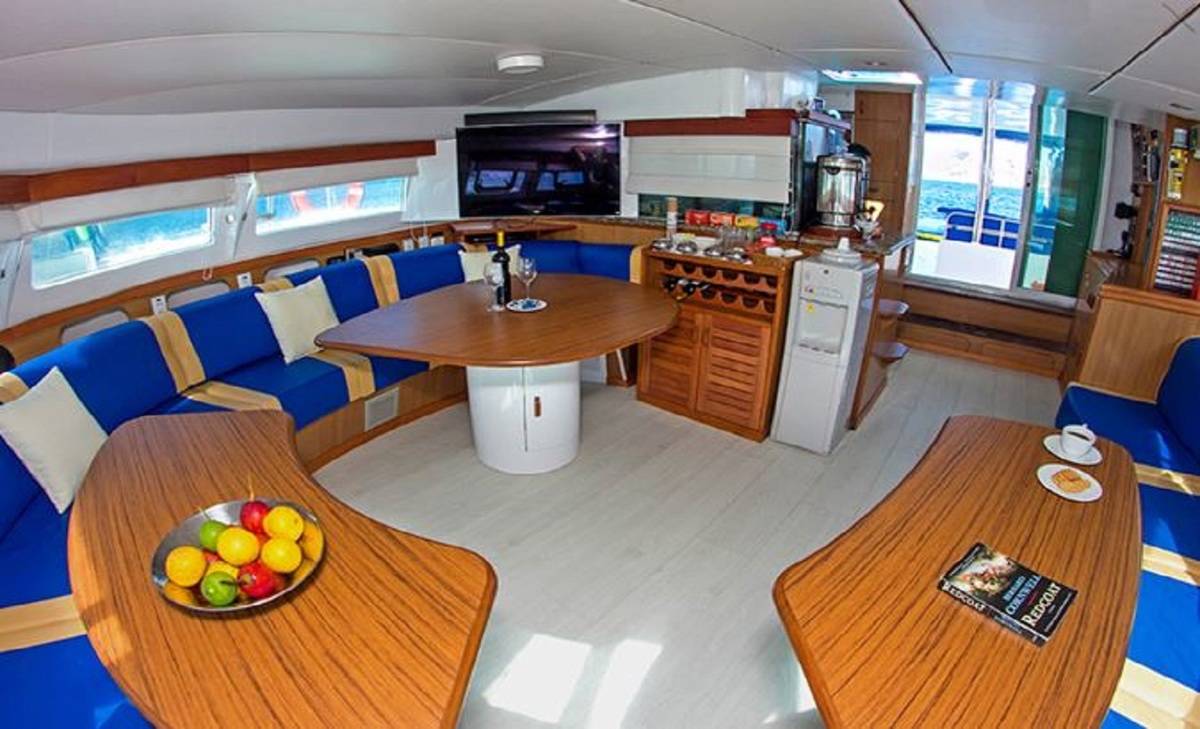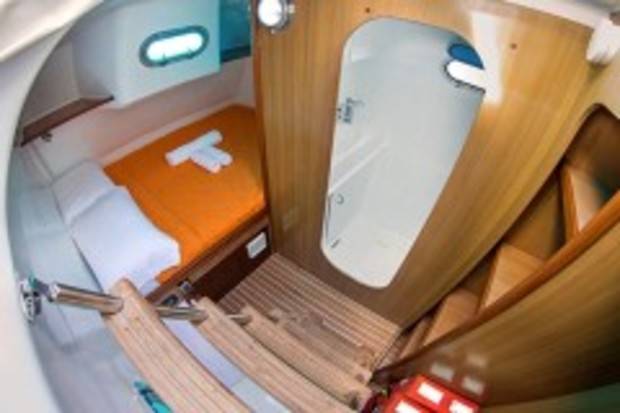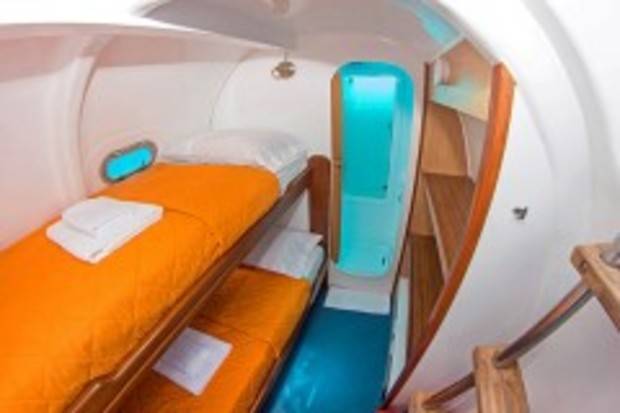Central, Southern and Eastern Galapagos Islands (B8)
8 Days - Nemo I
The Galapagos Islands are a nature lover's paradise. Some of the most unusual species in the world evolved here, including giant tortoises, marine iguanas, blue-footed boobies, and even the world's only equatorial penguin. Over 8 days aboard the comfortable Nemo I Catamaran we explore the central and eastern islands each of which offers something unique, from unusual geological formations, tortoise nesting grounds, rare bird species and winding lava flows.
from USD $3500pp

Home » Nemo I: Southeast Galapagos Islands
Itinerary Highlights
- Observe the sea lions scattered on the beach and catch them body surfing the waves
- Take a hike to Chico Volcano and watch the striking lava formations
- Observe the flightless cormorants and penguins very closely
- Enjoy zodiac excursions
Itinerary in Brief
- Day 1: Baltra - North Seymour
- Day 2: San Cristobal: Lobos Island - Kicker Rock - Brujo Hill
- Day 3: Espanola: Gardner Bay - Gardner Island - Osborn islet - Suarez Point
- Day 4: Floreana: Champion Islet - Cormorant Point - Post Office Bay - The Baroness Viewpoint
- Day 5: Charles Darwin Station - Santa Cruz: Highlands
- Day 6: Santa Fe - South Plaza
- Day 7: Chinese Hat - Santiago: Sullivan Bay
- Day 8: Black Turtle Cove - Baltra
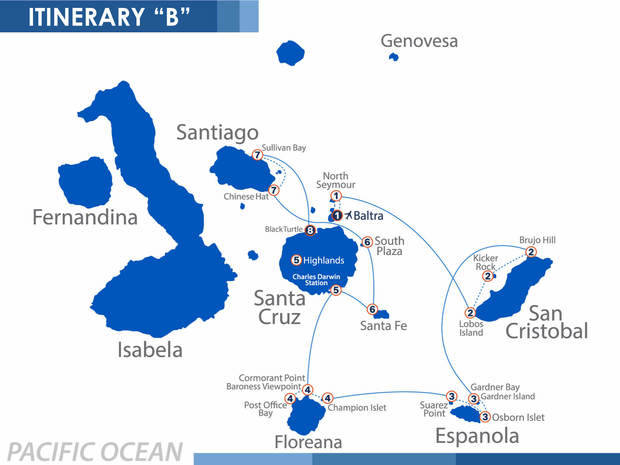
Day 1: Baltra - North Seymour
Upon arrival to Baltra Airport, you will meet your naturalist guide and fellow passengers, and the airport shuttle will transfer you to the ferry across the Itabaca Channel. On Santa Cruz you continue by bus through the lush highlands to the harbour of Puerto Ayora. Our inflatable dinghies (‘zodiacs’) take you the last stretch to the yacht.
Strolling along its coastline, blinding white Bachas Beach appears full of intertidal and bird life. But the symmetrical tuff cone-islet of Daphne Major will pull your eyes to the horizon as well. Beware of Galapagos sea lions, marine iguanas, a shark fin or (seasonally) mating Pacific green turtles in the surf! Both quiet beaches have become their preferred nesting site on the main island of Santa Cruz.
Day 2: San Cristobal: Lobos Island - Kicker Rock - Brujo Hill
In the morning we visit San Cristobal Leon Dormido, or Kicker Rock, so named because of its resemblance to a sleeping lion. Later, we head to Cerro Brujo is the remains of a tuff cone. It is one of the first sites visited by Charles Darwin. Captain Fitzroy climbed to the top of the hill to scout out reefs. It has an impressive landscape, where it is often possible to see coastal and migratory birds, including pelicans, Blue-footed Boobies, and Swallow-tailed Gulls, as well as sea lions and marine iguanas. At times the lagoon is completely dry and deposits of salt may be found in the bottom.
Isla Lobos is named after the amount of sea lions that rest on the seaside. Though at first sight it appears to just be barren rocks overgrown by palo santo, this low islet is home to male blue footed boobies and great frigate birds that try to impress the females with clumsy dances heaving their striking blue feet or blowing up their balloon-sized scarlet pouches. You can also find a lot of life in the intertidal zone, including striking bright orange sally lightfoot crabs and marine iguanas on the boulders. On the horizon you can distinguish the contours of Kicker Rock. This impressive rock islet has become one of the landmarks of Galapagos.
Day 3: Espanola: Gardner Bay - Gardner Island - Osborn islet - Suarez Point
We usually spend part of a day on the white sand beach at Gardner Bay where you will have time to take a long walk, jog in the surf, swim or snorkel. Sea Turtles nest on this beach and sea lions are often seen snoozing. Islote Gardner is a small island in front of Gardner Bay and is lined with vertical cliffs that drop to sandy ledges and large boulders. Islote Osborn is a small island, about 3 km from Espanola Island, perfect for swimming and snorkelling depending on national park regulation. At the Punta Suarez visitor site, on the north-western corner of the island, birds are everywhere. As the panga driver guides us in through the surf to the landing, sea lions are often seen on the waves. A great tangle of marine iguanas, stretched out in the sun on the beach, are usually present when we land.
Day 4: Floreana: Champion Islet - Cormorant Point - Post Office Bay - The Baroness Viewpoint
At Cormorant Point you land on a green olivine sand beach. Following a 100 m long path you will soon reach a beautiful lagoon with flamingoes. Next, we navigate to Champion Islet. Bottlenose dolphins frequently escort our passage to Champion Islet and you can see them from nearby jumping the wakes! Underwater, Galapagos sea lions are playful acrobats that become the number one attraction. You will also see lots of reef fish, and perhaps a green Pacific turtle. An inflatable dinghy ride along the shoreline of this islet offers sightings of lots of seabirds that are endemic to the archipelago, including Galapagos penguins, blue-footed boobies, magnificent frigate birds, red-billed tropicbirds, swallow-tailed gulls and lava herons. In the afternoon you will visit the Post Office Bay, which still keeps the legendary post barrel that whalers historically used to post their mail in. Later we will go to “Mirador de la Baronesa” (Baroness Lookout Point) and your naturalist guide will tell you the murder and mystery legend of the Baronesa. This viewpoint is located on the north of Floreana Island.
Day 5: Charles Darwin Station - Santa Cruz: Highlands
Santa Cruz offers excellent opportunities for viewing wild Galapagos giant tortoises, roaming through pastures in the agricultural zone and in the transition zone of El Chato Tortoise Reserve. The pond in the native forest reserve is the most authentic setting, but sometimes also requires an adventurous quest for these silent heavyweights. Than you have to listen carefully for the sound of heavy footsteps and of shrubs being slowly crushed. Most time of their stretched lives is spent slowly and silently, except for a warning hiss, or loud screams during mating, which can be heard from far in the first half of the year.
The Charles Darwin Research Station (CDRS) and the headquarters of the Galapagos National Park Service share same location on the outskirts of Puerto Ayora. From here biological research and indispensable conservation management of this unique archipelago are directed. The complex houses a bunch of interpretation and information centres about the National Park and the Galapagos Marine Reserve around.
Most memorable from your visit will probably be the successful breeding centre and the enclosures with Galapagos giant tortoises; even after the death of its world famous resident, emphatically called ‘Lonesome George’ († June 2012; the last known individual of the Pinta subspecies, who sadly failed to reproduce offspring). Most remaining adult giant tortoises in the corals are former pets and many of them are accustomed to human company.
Day 6: Santa Fe - South Plaza
Practically every animal on Santa Fe is unique; endemic to Galapagos, or even to this island alone and extremely vulnerable! This extraordinary island is remnant of the probably most ancient volcano of Galapagos, and gave evolution enough time and isolation to create its wonders. Your experience starts already before anchoring, when the contours of its bizarre giant prickly pear cactus (opuntia) forests become distinguishable. These largest cacti of the islands have extremely thick trunks indeed, and can grow over 10m/33ft tall! You will land right into a Galapagos sea lion colony on the beach. From their outlooks at the beach ridge surprisingly fearless Galapagos hawks are ready to snatch away a lava lizard; not worrying that even these are unique…
The southern of both Plaza islets is best place to encounter endemic Galapagos land iguanas. Watch your step and don’t stumble over one of them whilst distracted by equally bizarre giant prickly pear cactus-trees! These iguanas are not only ugly as Darwin pronounced, but also very patient and photogenic models with strikingly saffron colours. Overpopulation and severe food competition have affected their smaller size. It is incredible to see how cactus spines don’t harm them while chewing pads, flowers and fruits. Beware as well for some unique hybrids between a male marine iguana and a female land iguana.
Day 7: Chinese Hat - Santiago: Sullivan Bay
Today, you will visit the volcanic islet of Chinese Hat, an island just off the south eastern tip of Santiago Island. Shaped like a Chinese hat, this recent volcanic cone is separate d by a small channel of Turqoise water. Around the islet, you might spot sally light foot crabs and makes for a great snorkelling spot with sea lions and tropical fish.
In the afternoon, you will visit Sullivan Bay on the east coast of Santiago. We land on a white coral sand beach and begin our walk over lava that flowed less than 100 years ago. This is the perfect place to see and feel the volcanic origin of Galapagos.
Day 8: Black Turtle Cove - Baltra
The ancient mangle at Black Turtle Cove has grown out to forest proportions and forms the backdrop for a distinct adventure. You might even feel yourself a while in the Amazon rainforest instead of close to sea; though on a closer look vegetation mainly exists of red mangroves with characteristic aerial roots that let them survive in salty and brackish water. By inflatable dinghy we will explore the calm emerald lagoon and enter the surrounding shallow creeks of these salt-water marshes.
Transfer to Baltra airport for your flight back to Guayaquil or Quito.
| Dates | Cabin | From | Special Offer |
|---|---|---|---|
| 16 Jan 2023 - 23 Jan 2023 | USD $3500pp | ||
| Double Cabin | USD $3500pp | Contact us | |
| 30 Jan 2023 - 06 Feb 2023 | USD $3500pp | ||
| Double Cabin | USD $3500pp | Contact us | |
| 13 Feb 2023 - 20 Feb 2023 | USD $3500pp | ||
| Double Cabin | USD $3500pp | Contact us | |
| 27 Feb 2023 - 06 Mar 2023 | USD $3500pp | ||
| Double Cabin | USD $3500pp | Contact us | |
| 13 Mar 2023 - 20 Mar 2023 | USD $3500pp | ||
| Double Cabin | USD $3500pp | Contact us | |
| 27 Mar 2023 - 03 Apr 2023 | USD $3500pp | ||
| Double Cabin | USD $3500pp | Contact us | |
| 10 Apr 2023 - 17 Apr 2023 | USD $3500pp | ||
| Double Cabin | USD $3500pp | Contact us | |
| 08 May 2023 - 15 May 2023 | USD $3500pp | ||
| Double Cabin | USD $3500pp | Contact us | |
| 22 May 2023 - 29 May 2023 | USD $3500pp | ||
| Double Cabin | USD $3500pp | Contact us | |
| 05 Jun 2023 - 12 Jun 2023 | USD $3500pp | ||
| Double Cabin | USD $3500pp | Contact us | |
| 19 Jun 2023 - 26 Jun 2023 | USD $3500pp | ||
| Double Cabin | USD $3500pp | Contact us | |
**Prices are per person based on twin / shared accommodation.
**Single supplements may apply
Cabin Details
Double Cabin
Double bed, private bathroom (hot/cold water, hand shower and toilet), controlled air conditioning, fan and storage space.
Twin Cabin
Single upper and lower bunk, private bathroom (hot/cold water, hand shower and toilet), controlled air conditioning, fan and storage space.
Triple Cabin
Single upper bunk, lower double bunk, private bathroom (hot/cold water, hand shower and toilet), controlled air conditioning, fan and storage space.
Nemo I Deckplan

Specifications
- Registered Vessel Name: M/SC Nemo Martinica
- Type: Nautitech 82 Sailing Catamaran
- Construction Year: France, 1996; renovated: 2014
- Capacity: 14 passengers + 7 staff/crew members
- Class: Tourist Superior Class
- Naturalist Guide: 1 National Park-certified multilingual naturalist guide
- Crew: 6 experienced, trained and IMO-certified crew members: captain, pilot, sailor, machinist/engineer, cook and bartender/waiter
- Communal Areas: Sundeck, sun terrace, hanging nets at the bow, living room, shaded outdoor dining (alfresco)
- Length: 2,490m/83ft
- Width: 10m/33.34ft
- Number of cabins: 7 twins
- Cabin location: Lower deck
- Machinery: 2 engines John Deere 150 HP
- Amenities: TV, DVD, small library, 3 solo sea kayaks, 1 large zodiac
- Electricity: 110V/220V (ecological lighting 12V)
- Cruising Speed: 12 knots
- Wastewater treatment: 2 Raritan wastewater treatment systems
Whats included?
- On-board accommodation
- All meals, water coffee and tea during the voyage
- Transfers within Galapagos
- Bilingual naturalist guides
- Activities as specified
- Use of kayak and snorkelling equipment
What’s not included?
- International and internal airfares
- Arrival/departure taxes or reciprocity fees, visa fees where applicable
- Travel insurance
- Galapagos National Park fee US$100
- Transit control card US$20
- Gratuities
- Any items not mentioned as included

